Surf Board
€780.00 – €880.00
Description
Armstrong Surf Board: Craftsmanship Meets Cutting-Edge Performance
The Armstrong Surf Board stands as a beacon of innovation and tradition, crafted to elevate every surfer’s experience on the waves. Combining decades of expertise with modern design technologies, this board exemplifies precision, durability, and performance.
Inspired by the Ocean, Designed for Riders
Every curve and contour of the Armstrong Surf Board reflects a deep understanding of ocean dynamics and rider needs. Armstrong’s designers meticulously optimize the shape, rocker, and rails to deliver unmatched control, speed, and responsiveness.
Whether you’re carving through steep waves or cruising mellow breaks, this board adapts effortlessly, providing a seamless connection between surfer and sea.
Materials and Construction Excellence
Built with premium materials, including high-quality fiberglass, epoxy resin, and durable foam cores, the Armstrong Surf Board offers a perfect blend of lightweight agility and structural strength. Advanced layering techniques enhance durability, reducing susceptibility to dings and water absorption.
The result is a board that not only performs but also lasts season after season.
Designed for All Skill Levels
From beginner surfers taking their first ride to seasoned pros pushing limits, the Armstrong Surf Board offers models tailored to suit varying needs. Its forgiving design eases progression for newcomers, while advanced features satisfy expert demands for precision and speed.
Design and Innovation Behind the Armstrong Surf Board
The Armstrong Surf Board is more than just a board — it’s the culmination of years of research, innovation, and passion for surfing. Armstrong’s design philosophy centers on creating a board that harmonizes with the ocean’s rhythms while empowering surfers to push their boundaries.
Rider-Centric Design Approach
From the start, Armstrong’s design team placed riders at the forefront. Feedback from professional surfers, instructors, and enthusiasts shaped every curve and contour. This collaborative process ensures the board feels intuitive and responsive, no matter your skill level.
Moreover, Armstrong continuously refines its designs by integrating the latest hydrodynamic studies and rider insights. Therefore, the final shape offers a balance between speed, maneuverability, and stability.
Advanced Shape Engineering
Key to the Armstrong Surf Board’s performance is its expertly crafted rocker profile — the curve along the board’s length. This profile optimizes water flow, improving lift during takeoff and smooth turns once underway.
Additionally, the rail shape provides precise edge control, enabling confident carving and sharp maneuvers. The tail design, whether squash, round, or pin, further influences how the board releases water, affecting responsiveness and drive.
Cutting-Edge Materials and Construction Techniques
Armstrong employs premium materials such as EPS foam cores, layered with fiberglass and epoxy resin, which combine lightweight properties with durability. The construction process incorporates vacuum bagging and heat curing, resulting in a dense, resilient composite.wing surf
These techniques minimize weight while maximizing strength, reducing drag and enhancing wave performance.
Sustainability Commitment
Understanding the environmental impact of surfboard production, Armstrong prioritizes eco-friendly materials and manufacturing methods. Biodegradable resins and recycled foam cores are increasingly integrated, aligning performance goals with sustainability.wing surf
Innovation Highlights
-
Rider-driven design process with continuous refinement
-
Optimized rocker and rail profiles for balanced control
-
Lightweight, durable EPS and epoxy composite construction
-
Eco-conscious materials and sustainable production methods
Technical Specifications of the Armstrong Surf Board
Understanding the technical specifications behind the Armstrong Surf Board reveals how every design detail contributes to its exceptional performance. Armstrong builds each board with precision, offering a range of sizes, shapes, and constructions to meet specific rider needs.wing surf
Dimensions and Volume Options
The Armstrong Surf Board lineup includes multiple models, each with finely tuned dimensions. These variations ensure there’s a perfect fit for every surfer—from beginners to advanced competitors.wing surf
-
Lengths: 5’4” – 7’2” (162 cm – 218 cm)
-
Widths: 18.75” – 22.5” (47.6 cm – 57.2 cm)
-
Thicknesses: 2.25” – 3” (5.7 cm – 7.6 cm)
-
Volume: 30 – 55 liters (depending on size and shape)
Because volume affects flotation and paddling efficiency, Armstrong provides tailored volume-to-weight ratios across its range.
Shape and Contour Profiles
Each board features:
-
Moderate rocker: Providing lift in smaller waves while maintaining speed through turns
-
Single-to-double concave bottom contours: For added drive, lift, and water flow
-
Precision rails: Designed for optimal bite on the face of the wave
-
Tail options: Squash, round, and pin tail configurations, each enhancing different aspects of performance
These carefully calibrated contours result in a ride that feels both lively and forgiving.
Construction Materials
Armstrong prioritizes high-quality materials to maximize longevity and responsiveness:
-
Core: High-density EPS foam for buoyancy and impact resistance
-
Skin: Fiberglass cloth with epoxy resin lamination
-
Reinforcements: Strategic carbon fiber inlays to reduce flex under stress
-
Deck: Textured, wax-friendly finish for improved grip and board feel
By combining traditional hand-lamination with modern composites, Armstrong ensures each board is lightweight yet structurally sound.
Weight and Balance
Thanks to lightweight construction, the Armstrong Surf Board typically weighs between 2.6 kg and 4.3 kg (5.7 lbs – 9.5 lbs), depending on size. The balance point is precisely calibrated for improved carry, paddle position, and control.
Fin Systems
All Armstrong Surf Boards are outfitted with Futures or FCS II fin boxes, allowing for quick fin swapping and setup customization. Depending on the model, boards may come in thruster, quad, or five-fin configurations.
Quick Specs Summary
| Feature | Specification |
|---|---|
| Length Range | 5’4” – 7’2” |
| Width Range | 18.75” – 22.5” |
| Thickness Range | 2.25” – 3” |
| Volume | 30 – 55 liters |
| Construction | EPS core, fiberglass/epoxy shell, carbon inlays |
| Tail Options | Squash, round, pin |
| Fin Systems | FCS II / Futures, 3–5 fin setups |
| Weight | 2.6 – 4.3 kg |




Performance Features of the Armstrong Surf Board
The Armstrong Surf Board delivers more than just a ride—it delivers a performance evolution. Every element, from its shape to its materials, is engineered for function in the water. Whether you’re paddling into your first green wave or carving critical turns in overhead surf, the WKT-inspired Armstrong surfboards respond with unmatched reliability.
Paddle Efficiency and Early Wave Entry
First and foremost, Armstrong’s shape engineers prioritized paddle efficiency. The streamlined nose outline reduces water drag, while the moderate rocker allows paddlers to catch waves earlier without pearling. These characteristics lead to quicker acceleration and improved wave counts—especially in slow or mushy conditions.
Notably, the generous volume-to-length ratio ensures sufficient buoyancy, allowing even intermediate surfers to glide through chop and maintain speed when paddling out.
Smooth Rail-to-Rail Transitions
Because responsiveness defines a great surfboard, Armstrong sculpted the rails for fluid rail-to-rail transitions. Tapered midrails bite smoothly into the face, enabling dynamic turns without instability. The board feels responsive yet grounded—whether you’re drawing long carves or snappy cutbacks.
Additionally, the bottom contour’s single-to-double concave channels water under the tail, increasing drive through turns and boosting lift at the lip.
Control Under Pressure
When waves get critical, control becomes everything. Armstrong’s surfboards offer a tight, connected feel underfoot—even in steep or barreling conditions. This is largely due to the board’s reinforced carbon stringers, which minimize torsional flex during hard turns or landings.
Moreover, the subtle tail kick in most models increases sensitivity when shifting weight over the fins. That balance gives experienced surfers the confidence to commit deeper and hold faster lines.
Versatility Across Conditions
Because conditions change daily, Armstrong’s boards are built to perform across a broad spectrum of wave types. Whether it’s a small summer point break or a fast winter reef pass, the board adapts—maintaining its smooth, lively feel in everything from knee-high peelers to overhead slabs.
This wide range of performance is one reason so many surfers consider the Armstrong Surf Board a quiver killer.
Forgiveness for Progression
While performance is key, progression matters just as much. Armstrong’s designs feature just enough forgiveness to encourage learning without punishing mistakes. The board accelerates quickly, trims with ease, and recovers from awkward weight shifts better than stiffer performance-only models.
That blend of control and forgiveness empowers surfers to push harder and ride longer.
Performance Highlights
-
Enhanced paddle speed thanks to efficient rocker and nose outline
-
Effortless transitions from rail to rail through sculpted rail design
-
Superior control under pressure with carbon-reinforced stringers
-
Adaptable to all wave conditions from beach breaks to reef setups
-
Beginner-friendly forgiveness that doesn’t sacrifice pro-level performance
Rider Experience and Testimonials: Real Feedback from Surfers Who Ride Armstrong
The Armstrong Surf Board has earned its reputation not only through expert design but also by delivering consistent results for a wide spectrum of surfers. From pros chasing barrels to beginners catching their first green wave, riders consistently praise its performance, versatility, and durability.
Professional Surfers on the Armstrong Surf Board
Several professional riders have embraced Armstrong’s boards for their responsiveness and control under pressure.
Koa Jensen, a big wave competitor, said:
“The board reacts like it’s reading your mind. I can set a rail and trust it’ll hold. On steep walls, that’s the difference between making it and wiping out.”
Not only do pros like Koa commend the board’s balance and grip, but they also highlight how it doesn’t sacrifice speed when power surfing in hollow waves. The tail holds, the nose planes early, and the flex profile allows powerful arcs without chatter.
Intermediate Riders Share Stories of Rapid Progression
Surfers progressing from soft tops or beginner boards often find that the Armstrong Surf Board is a turning point in their surf journey.
Take Melissa V., for example:
“The moment I stepped onto my Armstrong, my confidence doubled. It paddled faster, turned easier, and gave me that instant feedback I needed to grow. I was linking turns within weeks.”
Because Armstrong balances performance with forgiveness, it’s widely praised for helping surfers transition smoothly from the learning phase to more advanced maneuvers.
Beginners Appreciate the Forgiving Ride
Even first-timers quickly notice how the board’s stability and generous volume improve their sessions.
Liam D., a beginner from Australia, said:
“It doesn’t punish mistakes. I had more fun learning because I spent less time falling. I’ll stick with Armstrong as I grow into better waves.”
By making takeoffs less intimidating and recovery easier, the board builds confidence session by session.
Diverse Conditions, Consistent Satisfaction
Surfers from California, Indonesia, South Africa, and Portugal alike report that the Armstrong Surf Board excels in both beach and reef breaks. Riders mention that the board adapts well to morning mush, midday wind swell, and clean evening peelers—all in the same day.pump foil board
This broad range of performance is often cited as one of the top reasons riders remain loyal to Armstrong.pump foil board
What Riders Are Saying
| Skill Level | Feedback Highlights |
|---|---|
| Professional | Holds in steep sections, predictable under pressure |
| Intermediate | Encourages progression, responsive rail control |
| Beginner | Stable and forgiving, paddles into waves easily |
| Travelers | Performs well in diverse conditions worldwide |
Comparison with Competitors: How the Armstrong Surf Board Outperforms the Rest
With so many surfboards on the market, choosing the right one can feel overwhelming. However, when placed side-by-side with its leading competitors, the Armstrong Surf Board consistently proves its edge—thanks to its construction quality, ride feel, and adaptability across wave conditions.pump foil board
Versus Generic Epoxy Boards
While many entry-level boards rely on basic epoxy layups, Armstrong takes things further by integrating multi-layer composites and carbon stringer reinforcements. This difference not only boosts durability but also adds responsive flex that cheaper models simply cannot replicate.pump foil board
Furthermore, Armstrong boards retain their pop and energy after months of use, whereas generic options often feel dead or waterlogged far sooner.pump foil board
Compared to High-End Performance Boards
Now, when matched against elite performance boards like Channel Islands or JS Industries models, the Armstrong Surf Board still holds its ground—especially in versatility. Where other high-performance boards often feel twitchy in softer waves, Armstrong’s shape delivers control and speed even when conditions aren’t perfect.pump foil board
Additionally, while some performance boards require a very specific surfer skill set, Armstrong boards welcome a broader range of abilities without compromising on responsiveness.
Price-to-Performance Advantage
Although Armstrong is positioned in the premium tier, its value becomes apparent once you account for:
-
Longer product lifespan
-
Better multi-condition performance
-
Higher resale value
-
Less need for multiple boards in your quiver
These benefits often translate into fewer purchases and more time surfing, making Armstrong a cost-effective option in the long run.
Travel-Ready and Durable
Another notable edge? Armstrong’s superior durability during travel. Competitor boards are often delicate—especially PU cores. Armstrong’s EPS core and epoxy skin resist heat and pressure changes, reducing damage risks during flights or long road trips.
Head-to-Head Comparison Table
| Feature | Armstrong Surf Board | Standard Epoxy Board | High-End PU/Carbon Board |
|---|---|---|---|
| Construction Quality | Premium EPS + carbon stringers | Basic EPS/epoxy | PU or hybrid carbon layups |
| Wave Range Performance | Excels in small-to-large surf | Limited to mellow or small waves | Optimized for perfect waves only |
| Rider Skill Compatibility | Beginner to pro | Beginner to intermediate | Advanced to expert only |
| Durability | Extremely impact and heat resistant | Prone to pressure dings | Sensitive to heat and stress |
| Travel Friendliness | High—lightweight and durable | Medium—needs heavy protection | Low—fragile and easily damaged |
| Overall Value | High long-term value | Lower upfront cost | High cost, limited usability |
Maintenance and Care: Keep Your Armstrong Surf Board in Peak Condition
The Armstrong Surf Board is built to last, but regular maintenance ensures you get the most out of your investment. With proper care, your board will maintain its performance, appearance, and resale value for years. Let’s explore the essential steps to protect and preserve your Armstrong board.
Rinse After Every Session
After each surf session—especially in saltwater—it’s crucial to rinse your board thoroughly with fresh water. Salt crystals can corrode hardware, wear away finishes, and cause long-term damage to your fin boxes or leash plug.armstrong fg wing board
Because Armstrong uses high-quality, salt-resistant materials, your board will hold up well over time—but regular rinsing still makes a difference.armstrong fg wing board
Dry and Store It Properly
Although Armstrong boards resist water absorption, never store a wet board in a bag for extended periods. Trapped moisture combined with heat may damage your board’s finish or create mold on the deck.
Instead:
-
Dry the board completely with a towel
-
Store it in a cool, shaded location
-
Use a ventilated board bag for added protection
By doing so, you preserve both the structure and the finish.
Avoid Excessive Heat and Sun
Though Armstrong’s epoxy resin has a higher heat tolerance than traditional PU boards, you should still avoid leaving it in direct sun or inside a hot car. Prolonged heat exposure may cause:armstrong fg wing board
-
Delamination
-
Discoloration
-
Pressure dents
Whenever possible, place your board under a tent, in the shade, or covered with a reflective board sock.
Inspect for Damage Regularly
While Armstrong boards are rugged, collisions with rocks, reefs, or other boards may still cause damage. Before and after each session, check:
-
The rails for cracks
-
The nose and tail for dings
-
The fin boxes for looseness or shifting
-
The leash plug and deck for pressure spots
If you catch any issues early, repairs are simple and cost-effective.
Perform Minor Repairs Promptly
Should you notice any cracks, dents, or chips, use a UV-cured epoxy repair kit or take your board to a certified repair professional. Because Armstrong boards are constructed with epoxy resin, do not use polyester-based ding repair kits—they can compromise the integrity of your board.
Transport Tips to Prevent Damage
Whether you’re heading to your local break or traveling across the globe, transport care matters. Armstrong recommends:
-
Using padded board bags
-
Avoiding stack pressure when loading multiple boards
-
Wrapping fins or removing them entirely
-
Adding bubble wrap to vulnerable areas like the nose and tail
Because the board is relatively lightweight, you’ll also find it easier to carry and stow safely.armstrong fg wing board
Maintenance Quick Checklist
| Task | Frequency |
|---|---|
| Rinse with fresh water | After every use |
| Dry before storing | Every session |
| Keep out of direct sunlight | Always |
| Inspect for damage | Before/after use |
| Perform repairs | As needed |
| Use padded travel protection | During transport |
Buying Guide: How to Choose the Right Armstrong Surf Board for You
With multiple models, sizes, and configurations available, selecting the right Armstrong Surf Board may feel overwhelming at first. However, by understanding your personal preferences, skill level, and surfing goals, you’ll be able to make a confident, informed decision.
Let’s break it down into simple steps so you can find the perfect board tailored to your needs.
Step 1: Determine Your Skill Level
Your experience in the water should guide your selection. Because Armstrong designs boards for every level, here’s how to approach it:
-
Beginner: Look for models with more volume (40–55L) and a wider, longer outline. These provide enhanced stability and easier paddling.
-
Intermediate: Aim for mid-volume boards (35–45L) with a balanced rocker for progression and maneuverability.
-
Advanced: Choose a lower volume (30–40L) and performance-oriented shape that prioritizes responsiveness and speed.
Since Armstrong boards are designed to evolve with the surfer, many intermediate models still perform well even as skills improve.
Step 2: Match the Board to Your Surfing Style
Not all boards are made for the same type of wave or maneuver. Therefore, it’s important to consider what kind of surfing you enjoy most:
-
Cruising small waves: Go for a wider, flatter board with more surface area and lift.
-
Carving and rail work: Look for medium rocker and refined rails for control through turns.
-
Fast, hollow surf: Choose narrower outlines with pin or rounded pin tails for hold and speed.
-
Progressive maneuvers and aerials: Opt for a short, lightweight model with a responsive tail and snappy rail-to-rail transitions.
Step 3: Consider Your Local Conditions
Armstrong’s boards perform across a wide range of conditions, but some features will suit your local break better than others:
| Wave Type | Suggested Board Traits |
|---|---|
| Mushy beach breaks | High volume, flatter rocker, wider tail |
| Point breaks | Medium volume, rounded rails, drive-oriented tail |
| Reef breaks | Low volume, deep concave, tighter tail outline |
| Mixed conditions | Versatile mid-size, all-around hybrid shape |
Since the Armstrong Surf Board thrives in multiple environments, you won’t need a huge quiver to enjoy different breaks.
Step 4: Choose the Right Fin Setup
Armstrong boards offer FCS II or Futures fin boxes. Here’s what to consider:
-
Thruster (3 fins): Best for all-around performance and control.
-
Quad (4 fins): Excellent for speed and looser turning in smaller waves.
-
Five-fin convertible: Offers the most flexibility depending on wave type.
If you’re unsure, choose a five-fin option—you can always configure it as needed.
Step 5: Factor in Your Height and Weight
Board volume and dimensions are most effective when aligned with your body type:
| Rider Weight | Recommended Volume Range |
|---|---|
| < 60 kg | 28–35 liters |
| 60–75 kg | 33–42 liters |
| 75–90 kg | 40–50 liters |
| 90+ kg | 48–55+ liters |
When in doubt, beginners should size up for float and forgiveness. Conversely, experienced riders often prefer lower volumes for agility.
Step 6: Buy from Authorized Dealers
To ensure you receive a genuine Armstrong product, always purchase from authorized dealers. Not only do you get access to full warranty coverage, but you also receive expert guidance, proper board handling during shipping, and potential demo options.
Summary: What to Consider When Buying
-
Skill Level: Match volume and shape to experience
-
Surfing Style: Choose based on your preferred maneuvers
-
Local Waves: Optimize shape for your regular surf spots
-
Body Type: Use weight-to-volume guidelines
-
Fin Configuration: Select the right setup for flexibility
-
Buy Smart: Go through certified Armstrong dealers
Frequently Asked Questions (FAQs) About the Armstrong Surf Board
To help you make a confident, informed decision, here are answers to the most commonly asked questions about the Armstrong Surf Board. Whether you’re a beginner wondering about sizing or an experienced surfer curious about construction, this section has you covered.
1. What makes the Armstrong Surf Board different from other surfboards?
The Armstrong Surf Board is crafted using aerospace-grade composites and carbon stringer technology, offering superior responsiveness, strength, and longevity. Additionally, it balances performance and forgiveness, making it ideal for both beginners and seasoned riders.
2. Can beginners use an Armstrong Surf Board?
Absolutely. Armstrong offers several models with higher volume and wider outlines, designed specifically to support early progression. These boards provide stability, easy paddling, and a smoother learning curve compared to traditional performance boards.
3. Are Armstrong boards good for advanced surfers too?
Yes. In fact, many professional and expert-level riders use Armstrong boards for their lively flex patterns, superior control, and precision in critical sections of the wave. The construction allows for aggressive maneuvers, rail engagement, and clean releases off the lip.
4. What materials are used in Armstrong Surf Boards?
Each board is built with:
-
High-density EPS foam core
-
Fiberglass and epoxy skin layers
-
Carbon fiber reinforcements in stress areas
This results in a lightweight, ultra-durable structure designed for serious ocean use.
5. How do I choose the right size?
Volume, length, and width depend on your weight, skill level, and the type of waves you ride. Beginners should opt for larger volumes for added stability, while advanced riders can go smaller for increased responsiveness. Refer to Armstrong’s volume-to-weight charts or consult an authorized dealer.
6. Are the fin systems universal?
Yes. Armstrong boards come equipped with either FCS II or Futures fin boxes, depending on the model. Both systems are widely compatible and allow for a variety of fin configurations (thruster, quad, or five-fin).
7. Can I travel with the Armstrong Surf Board?
Definitely. Armstrong boards are lightweight, durable, and designed for travel. However, we always recommend using a padded board bag and removing fins before long journeys to prevent damage during transport.
8. Does Armstrong offer a warranty?
Yes. Armstrong provides a manufacturer’s warranty covering materials and construction defects under normal use. Be sure to register your board and keep proof of purchase for claim eligibility.
9. Where can I buy one?
You can purchase Armstrong Surf Boards through authorized dealers and surf specialty retailers worldwide. Buying through an approved seller ensures full warranty protection and access to expert guidance.
10. How should I maintain my board?
-
Rinse with fresh water after each session
-
Store in a shaded, dry area
-
Avoid excessive heat or direct sun
-
Inspect for dings or damage regularly
-
Repair any cracks promptly using epoxy-safe materials
Additional information
| Size | 20L 3'11, 24L 4'1/2, 28L 4'3, 32L 4'5, 36L 4'7, 42L 4'9, 48L 4'11 |
|---|
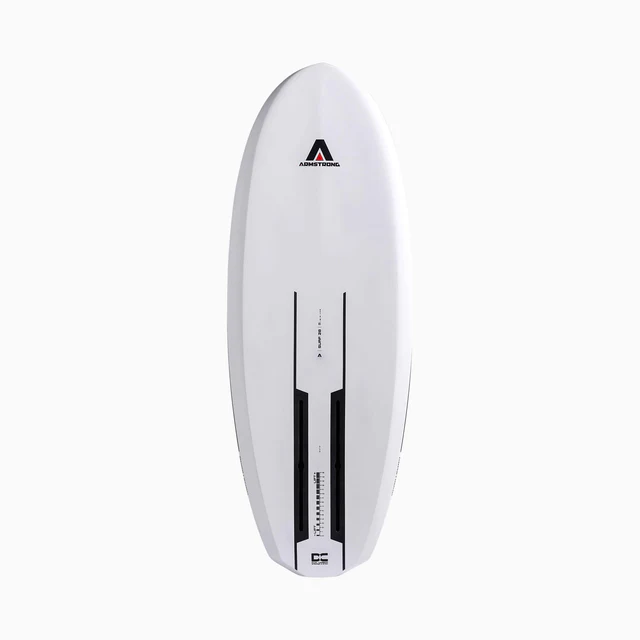
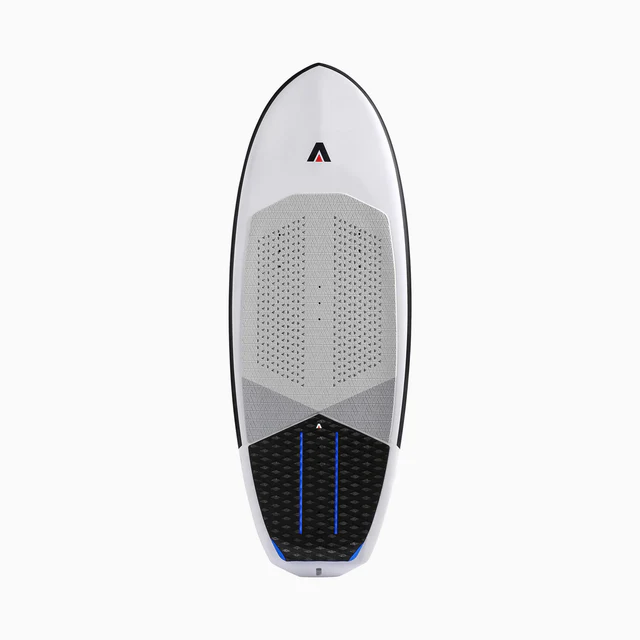
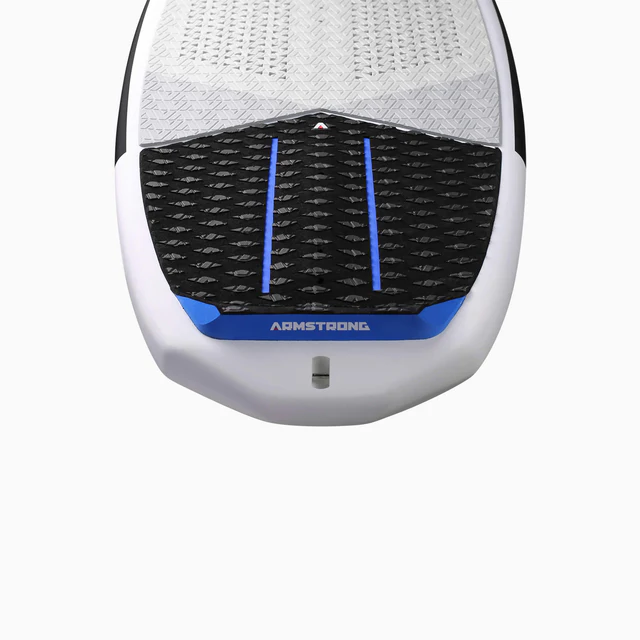
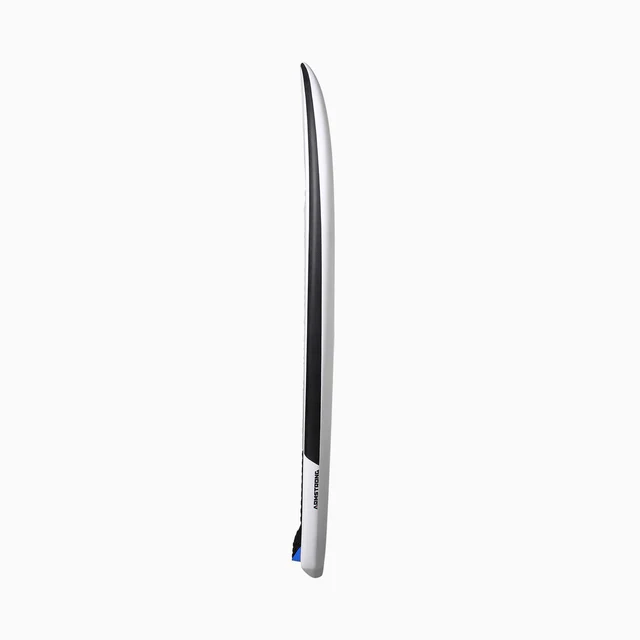
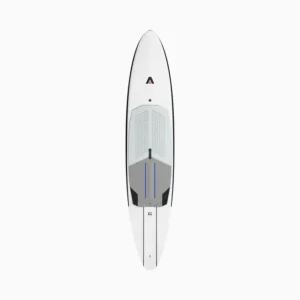
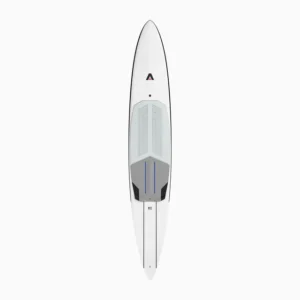
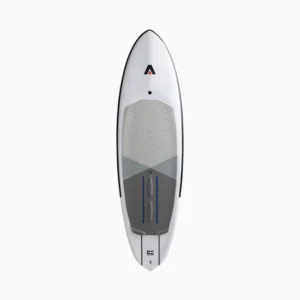
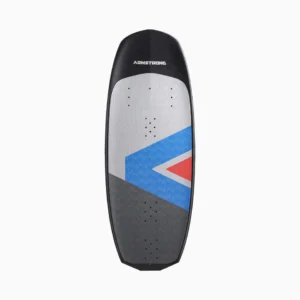
Reviews
There are no reviews yet.